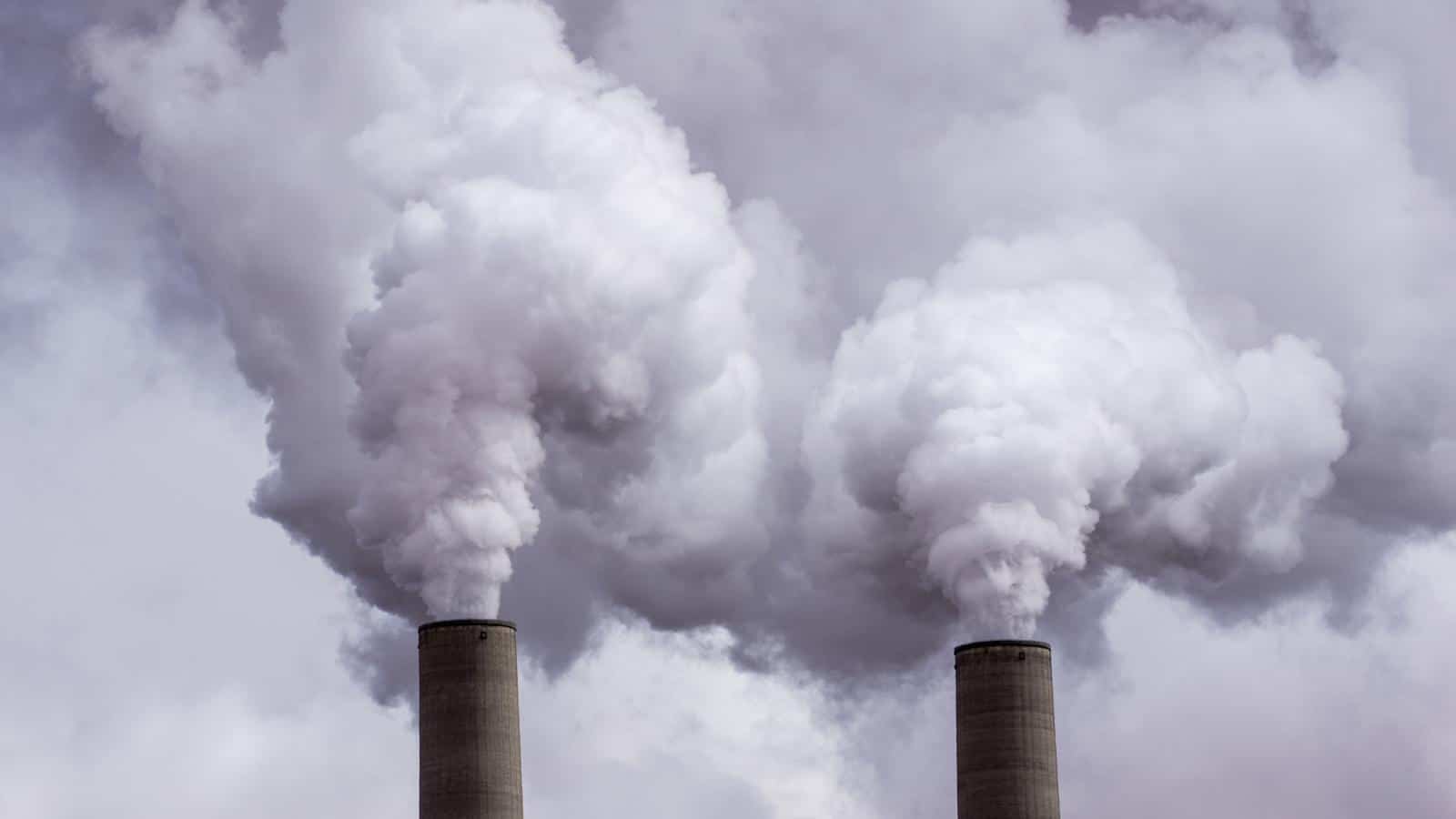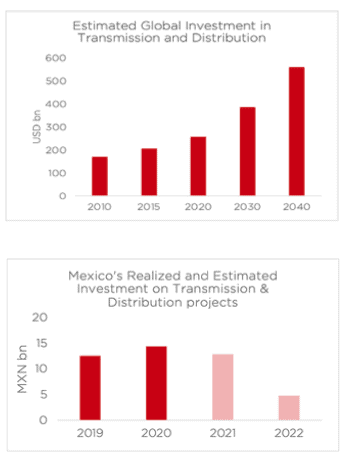The Importance of Investment in Transmission and Distribution Projects to Reduce Carbon Emissions and Energy Poverty

It is widely recognized that an increase in electrification will help reduce carbon emissions. For example, the increase in electrification would reduce the dependency on small diesel generators in developing countries and rural areas.
Broadly speaking electrification is the process to build up and increase in the capacity of electric generation and distribution. The build-out of electricity generation and distribution requires a significant level of investment; therefore, the increase in the levels of electrification must come hand in hand with a substantial investment on the transmission and distribution network.
In recent years, the level of investment in transmission and distribution projects has steadily been increasing and is expecting to reach circa USD400bn by 2030 which represents a compound annual growth rate of 4% from 2020 levels. This level of investments will translate into:
• Increased reliability and adequacy in electricity supply to meet electricity demand and the addition of new renewable generation. It is estimated that 75% of the new generation capacity added worldwide will be renewable
• The ability for both Commercial and Industrial (C&I) and residential users to benefit from lower electricity costs since the reduction in electricity costs is driven by the growing penetration of renewables in the generation mix
• Universal access to electricity as more people will be able to connect to the grid; and
• Reduced carbon emissions and other environmental goals being achieved as it will reduce the dependency of fossil fuel electricity generation

The inherent short, medium, and long-term benefits of having an extended and reliable transmission and distribution network are pushing many countries in devoting more resources and promoting investment in this activity. It is no surprise that western and developed economies are leading the way in the investment in the transmission and distribution network both for economic and environmental reasons. The US Energy Information Administration (EIA) reported that major US utilities spent USD40bn on the electric transmission system in 2019 alone, with almost two-thirds devoting to new investments. While unfortunately, developing countries are lagging in their level of investments to modernize and extend its transmission and distribution network. For example, Mexico is expected to keep reducing its level of investment of transmission and distribution as shown in the graph above.
This widening gap in the investment levels in transmission and distribution between developed and emerging economies has two serious consequences. First, it poses a great risk to meet ambitious carbon emissions reduction targets being adopted and supported worldwide, as it reduces people’s ability to access cheap, clean electricity and underpins developing countries’ reliance on fossil fuels. Second, it increases the levels of energy poverty. Energy poverty is defined by the World Economic Forum as the lack of access to adequate, affordable, reliable, quality, safe and environmentally sound energy services to support development.
Governments and NGOs have for many years been promoting off-grid solutions such as solar panels in developing countries to reduce energy poverty levels and reduce the use of fossil fuels. However, more resources are needed to significantly reduce the energy poverty levels. In this context, developed countries are providing more financial support for transmission and distribution projects in emerging countries with financiers and investors willing to do the same. For example, the US wants to mobilize up to USD3bn in aid for transmission and distribution projects in Africa which are expected to increase generation capacity by 30GW and create 60 million of new connections1 by 2030.
As demonstrated historically, investment in the transmission and distribution grid is paramount for achieving a reduction in carbon emissions levels, providing universal access to clean, affordable, and reliable energy, and greater socioeconomic development. As such, there must be a greater commitment to support these efforts in particular from developing economies. Some people may think that these types of investments further stretch the already- thin resources of developing nations, but when you consider the long-term benefits, it is worth the initial investments. A solution to this concern would be for an increased participation of the private sector in the transmission and distribution projects rather than relying solely on public funding and expenditures. Mexico is a prime example for this proposal.

Unfortunately, Mexico’s Government finances are overstretched and one of the factors is due to their commitments to PEMEX and CFE; and the significant reduction in tax revenues associated with the adverse impact of the pandemic and COVID19. By allowing private sector financing and actively participating in transmission and distribution projects would provide some relief to Mexico’s ailing finances. An example of this private-public cooperation would be to restart the interconnection project between Sonora and Baja California Sur. This project would help people in this state to benefit from accessing cheap and clean generation and decrease its dependency on fossil fuel generation.
Mexico and other nations have numerous challenges in relation to energy transmission and carbon emissions reductions, many of which cannot be resolved through investments in transmission and distribution alone. However, there is no denying the importance of energy when it comes to addressing environmental, economic, and social problems of a nation. America and many other countries have learned that electric transmission is foundational for economic growth. It helped drive America’s industrial growth and can do the same for other nations, while also protecting the environment and providing much needed relief to the poor.
1 Source: USAID POWER AFRICA TRANSMISSION ROADMAP TO 2030




